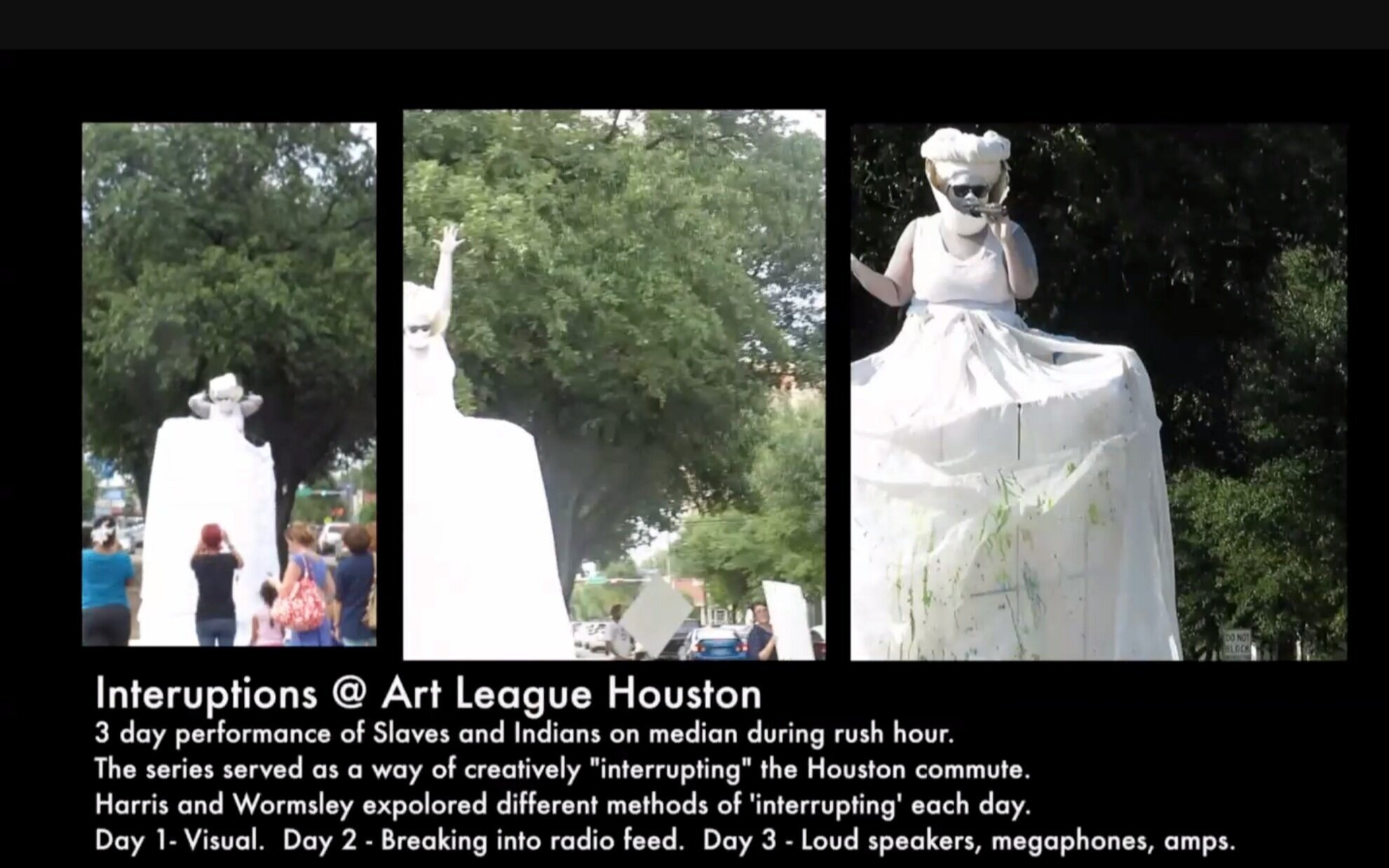By Ayesha Munawar
For interdisciplinary artist Alisha Wormsley, art is much more than sculptures and paintings. She uses multimodal art as a way to give a voice to Black women in America.
Interdisciplinary artist Alisha Wormsley spoke to UCSB’s Art Department
“A lot of my work is about creating space and time, going against the oppressive use of time, the oppressive use of space, but countering that to set a vibe, to make time and space for Black people to just be,” Wormsley said in a guest lecture last week hosted by the UC Santa Barbara Art Department.
Wormsley, who teaches at Carnegie Mellon University in Pittsburg, is known for her film and sound installation projects, which she discussed as part of the UCSB’s Art Colloquium, that runs for 10 weeks. Over 200 faculty members and students tuned in to the Zoom lecture to hear about the thought processes behind the creation of her works.
A project Alisha Wormsley and Lisa Harris collaborated on in Houston, Texas.
Wormsley’s work helps provide a safe space for Black women in America. She uses collage, photography, and print, as well as installations. Her public art has included a collaboration with musician and multimedia artist Lisa Harris. The two fashioned an interactive costume out of a cage for Harris to become a living statue and perform “Slaves and Indians,” an event over three days at a park in Houston that creatively “interrupted” residents during their commute.
“I think about a lot of spaces, a lot of resources, a lot of references, a lot of spirit I have tapped into to create the work that I’ve made,” Wormsley said. Her themes include collective memory and the synchronicity of time.
“I am also coming to this practice with a real love of science fiction, fantasy, and mythology and the combination of all of those things, which I like to call ancient futurism,” she said. “It really is just this way of expanding time.”
“The Sanctified Church,” by Zora Neale Hurston whose book Wormsley cited as one of her inspirations.
Wormsley cited as one of her inspirations the cultural anthropologist Zora Neale Hurston whose book “The Sanctified Church” expands one’s sense of time while exploring oppression. Hurston did a series of studies in the rural South where she went to Black sacred spaces, including churches, house churches, and other spiritual ritual spaces. In one of her studies, she recorded mostly Black women speaking in their native tongues.
“That to me blew my mind. That’s like X-Men, the fact that we collectively can tap into something that has been taken away from us, that is no longer our main language,” Wormsley said.
In 2020, Wormsley launched an art residency in Pittsburgh, Pennsylvania for Black creative mothers called Sibyls Shrine, to ensure Black women, womxn, trans women, and femmes who are mothers and identity as creators to have a voice.
“I am also really inspired by my grandmothers, and my mom, and my aunties, and my great grandmothers and their ability, that magic that Zora Neale Hurston found,” Wormsley said. “I grew up seeing my family feed a whole neighborhood with very little.”
Ayesha Munawar is a fourth year UCSB student majoring in Communication. She is a web and social media intern for the Division of Humanities and Fine Arts.




